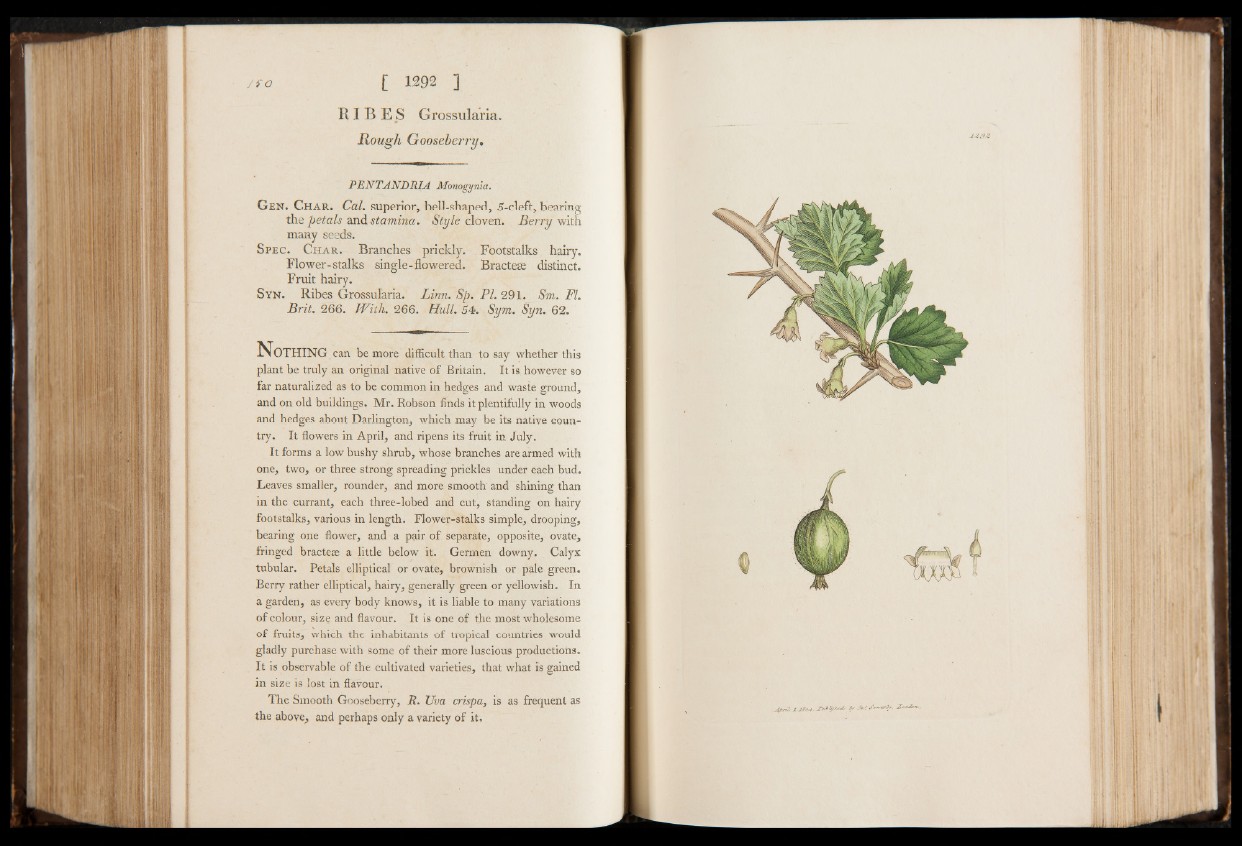
/ CO [ 1292 ]
R I B E S Grossularia.
Rough Gooseberry.
PENTANDRIA Monogynia.
G en. Char. Cal. superior, bell-shaped, 5-cleft, bearing
the petals and stamina. Style cloven. Berry with
many seeds.
Spec. Char. Branches prickly. Footstalks hairy.
Flower-stalks single-flowered. Bractese distinct.
Fruit hairy.
Syn. Ribes Grossularia. Linn. Sp. PI. 291. Sm. FI.
Brit. 266. With. 266. Hull. 54. Sym. Syn. 62.
N o t h i n g can be more difficult than to say whether this
plant be truly an original native of Britain. It is however so
far naturalized as to be common in hedges and waste ground,
and on old buildings. Mr. Robson finds it plentifully in woods
and hedges about Darlington, which may be its native country.
It flowers in April, and ripens its fruit in July.
It forms a low bushy shrub, whose branches are armed with
one, two, or three strong spreading prickles under each bud.
Leaves smaller, rounder, and more smooth and shining than
in the currant, each three-lobed and cut, standing on hairy
footstalks, various in length. Flower-stalks simple, drooping,
bearing one flower, and a pair of separate, opposite, ovate,
fringed bractese a little below it. Germen downy. Calyx
tubular. Petals elliptical or ovate, brownish or pale green.
Berry rather elliptical, hairy, generally green or yellowish. In
a garden, as every body knows, it is liable to many variations
of colour, siz§ and flavour. It is one of the most wholesome
of fruits, which the inhabitants of tropical countries would
gladly purchase with some of their more luscious productions.
It is observable of the cultivated varieties, that what is gained
in size is lost in flavour.
The Smooth Gooseberry, R. Uva crispa, is as frequent as
the above, and perhaps only a variety of it.